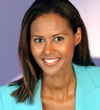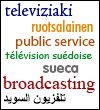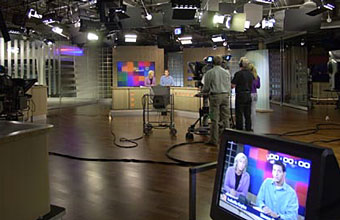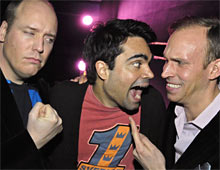|
This digital news studio in Stockholm has room for eleven news programmes.
The Swedish public service broadcaster - Sveriges Television (SVT)Channels But it was a flying start, the culmination of several years' trial programme transmissions. In 1969 a second national channel was added. Today SVT operates six channels - five national, SVT1, SVT2, SVT24, Barnkanalen (a childrens´ channel) and together with UR, Kunskapskanalen, and one European, SVT Europa. Barnkanalen and Kunskapskanalen share the same channel ID. SVT1 and SVT2 are still analogue (in some parts of the country) as well as digital. All the others are digital only. All are distributed via the terrestrial net as well as via digital satellite, digital cable and broadband. The terrestrial analogue net is in the process of closing down in Sweden. The work which proceeds stage by stage, has so far has been going very smoothly and will be finished at the latest in February 2008. In late 1997, SVT started broadcasting via satellite to Swedes living in Europe outside Sweden. SVT Europe offers in-house productions only in real time to Swedish-speaking viewers in Europe, Asia, Australia and Africa. The transmissions are digital. Corporate Structure Rules and regulations One of the most important points is "to scrutinize authorities, organizations and private firms which exert influence over policy affecting the public, and cover the activities of these and other bodies". Programming Audience relations |










